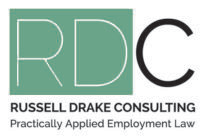Update your strategy with Russell Drake Consulting
As anticipated, the Government have announced that the Minimum Wage will increase to $22.70 effective as of 1 April 2023, representing an increase of 7.1% and making this approximately equal to the December 2022 CPI figure of 7.2%.
With this increase scheduled to affect the lowest paid employees shortly, where are increases for other employees likely to go?
Naturally those staff who sit marginally above the minimum rate will be expecting to retain at less the pay gap parity that currently exists when this increase takes effect, with many employers choosing to adopt a simple sliding scale to ensure that this does occur. However, in recent years there has been an increasing trend for employers to pay greater than the minimum wage as an entry level starting point. Employers electing to pay higher starting rates are increasingly looking to develop pay scales that use the Living Wage as a basic entry point – this rate being set at $23.65 effective as of 1 September 2022. The gap between those on the minimum wage, and those on the Living Wage, is therefore narrowing rapidly.
While this trend has been initiated within the Public Sector, and specifically Local Government, the current skills shortage issues facing the country has driven an increasing number of private companies to also match this mark in order to compete for talent.
The ongoing skills crisis, a global issue not just a NZ concern, is forecast to continue throughout 2023 with this also contributing to ongoing supply chain issues (NZ and Global). This is predicted to continue to put pressure on the cost of living, and wage rate inflation, for some time.
Despite the Government introducing an ‘immigration reset’ in mid-2022, this has done little to address the skills shortages with wage rate inflation being heavily influenced by the continued ‘fight’ to secure employees. NZ businesses are therefore doing all they can to retain their existing staff with most being adverse to shedding employees in these tight labour conditions knowing that, seeking to replace them at a later date may prove problematic. Under the ‘immigration reset’ the required wage rate for overseas recruits was $27.76, with this increasing to $29.66 on 27 February 2023. This naturally has a flow-on effect to existing workers within businesses where immigrant workers are to be employed.
So where are wage rate increases going, and what are the trends within general terms and conditions?
Based on an analysis of data held by the Centre for Labour, Employment and Work (CLEW) – a unit within Victoria University of Wellington, the following trends have emerged over 2022, with these largely influencing remuneration conditions in 2023:
- The annualised average wage increase across collective agreements was 4.9% to June 2022.
- 44% of employment agreements now have provisions for flexible working hours, a significant increase from only 17% in 2010.
- 31% of collective agreements provide for greater than the minimum entitlement of four (4) weeks per annum for annual leave.
- 70% of employees can accumulate sick leave entitlements to greater than the statutory minimum of 20 days.
- Four (4) weeks’ notice of redundancy is becoming the norm across all sectors.
- 60% of agreements have some provision for ongoing training and skill development.
Based on the information currently available and leading on from the announced 7.1% increase in the minimum wage on 1 April 2023, pay increases can be expected to be realistically set in the 5.0 – 10% bracket with a median increase rate of 7.0% being factored in for many employers as we progress into 2023.
On the back of this data, we are currently working with some employer’s to develop more robust remuneration strategies that take full consideration of all benefits the employer can offer existing and prospective employees, and not just wage rates. If you are questioning how you are going to address the attraction and retention questions, without ‘breaking the bank’ place feel free to contact us (07 838 0018) about developing a specific Remuneration Strategy for your business.
Thank you to our fellow EMA Consultants for contributing to the gathering of the above data.
Please feel free to contact us on 07 838 0018 if you have any questions regarding employment law or employment situations where you require assistance.

